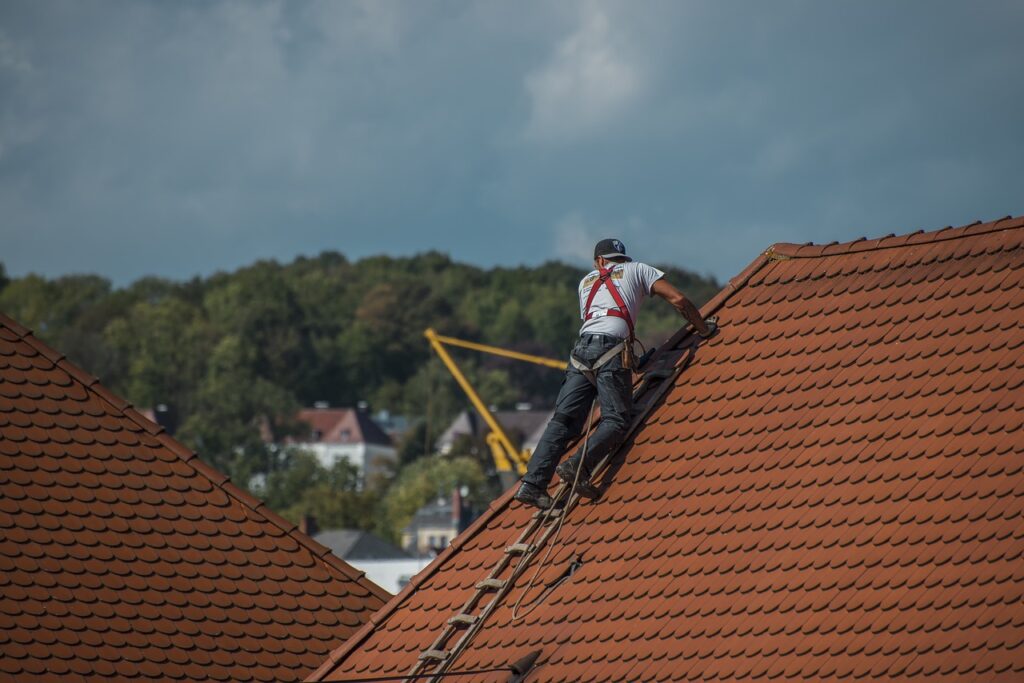If you are considering a roof replacement this year, you might be wondering: Should you replace your roof in the summer? Pros and cons abound, and as a New Jersey homeowner, it’s smart to weigh them before scheduling your project. Summer is a popular time for home renovations, including roofing—but it’s not always the perfect fit for every situation. In this guide, we’ll explore why many homeowners choose summer for roof replacement, what challenges you should anticipate, and how to decide if this season is the right choice for your roofing project.
Why Many Homeowners Choose Summer for Roof Replacement
Summer remains one of the busiest seasons for roofing contractors, and with good reason. Warm, dry weather typically offers ideal conditions for roofing work. Roofing crews can work more efficiently and safely when they do not face icy surfaces, snow, or heavy rains. In addition, shingles and other roofing materials seal more effectively in warm temperatures, ensuring better long-term performance.
Scheduling a roof replacement in summer also helps homeowners prepare for fall storms and winter snow. A new, well-sealed roof installed in the summer stands ready to handle the cold and wet seasons ahead. For many NJ homeowners, summer is also a convenient time to schedule projects. School vacations and flexible work schedules make it easier for families to coordinate major home improvements.
Pros of Replacing Your Roof in the Summer
Ideal Weather Conditions
Summer typically delivers extended dry spells and warm temperatures that make roofing installations more predictable and efficient. Roofing crews can work longer days with fewer weather interruptions, accelerating project turnover and minimizing scheduling delays. Shingles and underlayment materials bond more effectively in warm conditions, creating a stronger seal that resists wind uplift and moisture infiltration when storms arrive. Additionally, summer’s stable weather allows contractors to schedule follow‑up inspections or minor touch‑ups without conflict from unexpected cold snaps or snow. Taken together, these conditions ensure your new roof starts off on the strongest possible footing, reducing early-season risk and building long‑term durability.
Efficient Material Performance
Certain roofing materials actually perform better in summer heat. Asphalt shingles, for instance, rely on ambient warmth to activate their sealant strips, promoting a tighter, weather‑resistant bond right from the start. Metal roofing also benefits from warm installation temperatures, as the materials flex and settle more easily into place, reducing the risk of premature fatigue or cracking. Contractors experienced with summer installations account for thermal expansion, ensuring fasteners accommodate shifting without warping. This proactive handling prevents long-term issues that can emerge once temperatures fluctuate again in autumn. Ultimately, choosing summer installation ensures your materials lock in properly, extending their lifespan and performance under seasonal stress.
High Contractor Availability
Summer is roofing professionals’ busiest time, and most companies hire additional crews or extend working hours to meet demand. This heightened workforce means you get more scheduling flexibility—allowing your project to begin sooner or conclude faster. Skilled subcontractors for ventilation, flashing, and gutter work also tend to be more accessible during summer, letting your entire roofing system be completed cohesively. If unexpected issues arise during installation, contractors are more likely to have backup teams or emergency slots available. Knowing the summer rush is underway, many companies also offer their best pricing and warranties during this peak season, ensuring you receive both quality and value for a major investment.
Protects Your Home Before Fall and Winter
Completing a roof replacement in the summer means your new roof stands ready to guard against fall’s heavy rains, leaf accumulation, and winter’s snow and ice. This proactive timing saves you from scrambling to repair leaks once colder weather has already arrived, when water damage and insulation issues can escalate quickly. A early‑installed roof also helps maintain your home’s energy efficiency during cooling months by ensuring attic insulation stays dry and functioning properly. That stable attic environment can reduce air conditioning costs in summer and heating costs later on. By eliminating major vulnerabilities before high‑risk seasons arrive, you maintain structural integrity and avoid stress when storms move in.
Maximizes Insurance and Financing Options
Many insurance companies look favorably on roofs replaced in ideal weather seasons, and early summer installs might help you qualify for certain discounts or expedited processing. Some lenders or financing programs for home improvement projects require documented installation dates and favorable weather conditions—both of which summer replacements naturally provide. This timing also gives you room to fix any minor roof issues before renewal or renewal assessment periods. These strategic financial advantages underscore that summer is not just a convenience—it’s a savvy timing choice that can save you money and simplify logistics.
Cons of Replacing Your Roof in the Summer
Heat and Humidity Impact on Crews
Working under direct sun and high humidity levels can be physically taxing for roofing crews, even the most experienced ones. During heat waves, contractors may need to pause work during peak hours or rotate their workforce more frequently to avoid health risks. This necessary caution can slow down progress and extend project timelines, especially during extreme weather events. Intense UV exposure can also hasten material deteriorations if left out temporarily, requiring contractors to actively protect supplies on hot afternoons. Although summer provides many benefits, managing worker safety and material preservation adds layers of consideration and oversight for both the homeowners and the contractor.
Peak Pricing and Scheduling Constraints
Summer’s popularity for roofing projects can also drive up prices for materials, labor, and related services. If you wait too long into the season, contractors may quote higher rates or start adding rush fees as demand peaks. In addition, some materials may go out of stock due to high-season inventory depletion. If you don’t secure your appointment early—ideally by spring—you risk being added to a waiting list or facing steep price surges. A summer installation thus requires proactive planning and early commitment to avoid inflated costs or project postponement, which can complicate budgeting and disrupt your preparation schedule.
Disruption During Hot Weather
Roof replacements involve noise, foot traffic, and occasional debris, which is challenging even in moderate weather—and summer heat compounds the discomfort. Homes without air‑conditioned attic space or proper ventilation may suffer from increased interior temperature, leading to reduced comfort for residents. Noise from nail guns, heavy lifting, and shingle blowing can be disruptive, especially if school is out or occupants work from home. Pets and young children may also show stress due to prolonged activity on the roof. If your household demands quiet or optimal comfort during the day, summer roofing may clash with daily routines more than you anticipate.
Risk of Sudden Summer Storms
Although summer often features extended dry stretches, thunderstorms and microbursts can still catch homeowners off-guard. A sudden squall can halt work, necessitate tarp protection, and compel crews to quickly secure exposed areas. This reactive downtime can prolong the timeline or require emergency resealing once weather clears, adding both labor and tarp rental costs. You should choose a contractor with a robust rain contingency plan—one that includes quick response times, material protection, and guaranteed coverage for weather-related disruptions. Even though a few cloudy days won’t derail the project entirely, they can add stress and require flexibility from everyone involved.
Not Ideal for Every Situation
Some roofing systems or underlying structural conditions may not be safe to replace during intense heat. For example, rubber membranes or specialized green roofing buys may require cooler conditions for proper installation. Homes with solar installations or complex flashing detail often require precision work that summer heat can compromise. Added complexity may also increase labor costs due to longer work hours, tighter tolerances, or extra safety needs. If your roof shows evidence of storm damage or structural weakness, spring or early fall may offer a better window for careful replacement. Summer works for most homeowners—but not for every single roof type and situation.
Should You Worry About Summer Storms?
One question many NJ homeowners ask is whether summer storms might disrupt their roofing project. While it is true that pop-up thunderstorms and heavy downpours can occur in summer, experienced roofing contractors know how to plan around them. Most will monitor forecasts carefully and schedule projects during stretches of stable weather. They will also take precautions to protect your home in the event of unexpected rain. It’s always wise to ask your roofer about their rain contingency plans before work begins.
How Summer Affects Roofing Material Performance
The summer heat can actually help certain roofing materials perform better. Asphalt shingles, for example, bond more effectively when installed in warm weather. The sun’s heat activates the adhesive strips on each shingle, helping them seal tightly to the ones below. This creates a continuous, water-resistant barrier that resists wind uplift and leaks.
Metal roofing also installs well in summer, provided your contractor takes care to account for thermal expansion. In some cases, extreme heat can make materials such as rubber membranes trickier to install, so the contractor’s experience with summer work becomes even more valuable. Ask your roofer about how they handle your specific roofing material in hot weather to ensure the best results.
Is Summer the Best Time for Every Home?
The answer depends on your home’s condition and your personal priorities. If your current roof is leaking, badly worn, or storm-damaged, it makes sense to move forward with a summer replacement. Delaying a needed roof replacement can expose your home to further damage. On the other hand, if your roof remains in fair condition, you might choose to schedule the project for early fall when temperatures are still favorable but contractor demand starts to ease.
Your family’s schedule matters too. Summer roofing work can be noisy and disruptive, especially for those working from home or with small children. If you can plan a short trip or vacation during the project, you may avoid the worst of the disruption. Ultimately, the best time to replace your roof is when it fits both your home’s needs and your lifestyle.
Tips for a Successful Summer Roof Replacement
If you do choose to replace your roof in summer, a few simple steps can help the project go smoothly. First, schedule early. The best contractors book up quickly, so it’s smart to reserve your spot by late spring. Communicate with your roofer about start times and work hours—many crews will begin early in the day to beat the heat. Plan for some temporary disruption to outdoor spaces, especially around your driveway and yard.
Be prepared for noise, and if needed, arrange for family members or pets to be out of the house during peak work hours. Finally, work with a roofing company that has proven experience handling summer installations. They will know how to manage heat-sensitive materials and adapt to weather conditions for a flawless result.
Why Choose Deegan Roofing for Your Summer Roof Replacement?
If you’re considering a roof replacement this summer, you want a contractor who knows how to handle New Jersey’s weather and roofing challenges. Deegan Roofing brings decades of local experience to every project. We understand how to time and execute summer installations for maximum efficiency and quality. Our skilled crews know how to work safely in hot weather, and we use materials rated for peak summer performance.
At Deegan Roofing, we prioritize clear communication and careful planning. We’ll walk you through the process, answer your questions, and tailor our approach to your home’s needs. Whether you need an urgent replacement or are planning ahead, we’ll help you choose the best timing and materials for lasting protection. We stand behind our work with strong warranties and a reputation built on satisfied customers throughout NJ.
Final Thoughts: Should You Replace Your Roof in the Summer?
So, should you replace your roof in the summer? Pros and cons both exist, but for many homeowners, summer remains an excellent choice. With the right preparation and a trusted contractor, you can take advantage of good weather, efficient installation, and optimal material performance. If your roof needs replacement, don’t wait—schedule your project now to protect your home before the seasons change.
Ready to Replace Your Roof? Contact Deegan Roofing Today!
Deegan Roofing proudly serves Northern and Central New Jersey with expert roofing services. Whether you need a summer roof replacement, a full inspection, or advice on the best timing for your project, we’re here to help.
Contact Us Today
📞 Phone: (908) 322-6405
✉️ Email: info@deeganroofing.com
📍 Address: 61 Terrill Rd, Scotch Plains, NJ 07076
🌐 Website: www.deeganroofing.com
🛠️ Serving: New Jersey and surrounding areas
Related Posts:
- Getting Your Roof Ready for Summer Storms: What Every NJ Homeowner
- Pros and Cons of Metal Roofing for New Jersey Homes
- Why Licensed & Insured Roofers Matter More Than You Think
Podcast: Play in new window | Download

